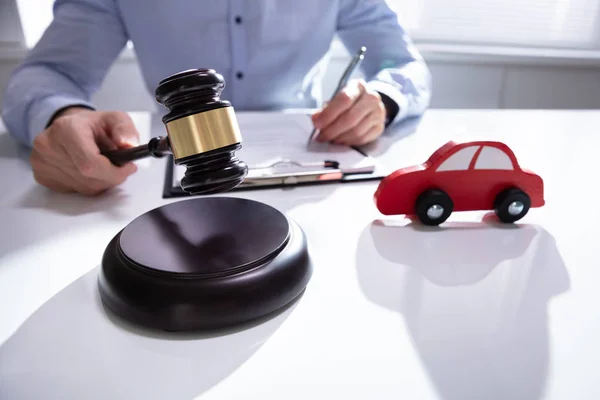How To Qualify For A California Used Car Buyback: A Step-By-Step Guide
Purchasing a used car can be a smart financial decision, but it also comes with the risk of inheriting a vehicle with hidden problems. Fortunately, California offers consumer protection through its Lemon Law, which extends to used cars under certain conditions. One of the remedies available under this law is a buyback, where the manufacturer repurchases the defective vehicle. However, qualifying for a California used car buyback involves meeting specific criteria and following a precise process. This guide will walk you through the steps to determine if your vehicle qualifies and how to pursue a buyback.
Step 1: Understand the California Lemon Law for Used Cars
Criteria for a Used Car to Qualify
To qualify for a buyback under California’s Lemon Law, the used car must meet several key criteria:
- Warranty Coverage: The vehicle must be covered by the manufacturer’s original warranty or a certified pre-owned (CPO) warranty at the time the defects occurred. This includes both new car warranties transferred to a subsequent owner and extended warranties offered by the manufacturer.
- Substantial Defect: The car must have a defect that substantially impairs its use, safety, or value. This could be anything from a faulty transmission to persistent engine problems that the manufacturer cannot fix after a reasonable number of attempts.
- Reasonable Repair Attempts: The manufacturer or its authorized dealer must have made a reasonable number of attempts to repair the defect without success. Generally, this means at least two or more repair attempts for a serious safety issue or four or more attempts for less severe problems.
- Time or Mileage Limits: The defect must occur within a specific time frame or mileage limit, typically within the first 18 months or 18,000 miles of ownership, whichever comes first. However, these limits may vary depending on the specific warranty.
What Doesn't Qualify?
Not all issues qualify under the Lemon Law. Cosmetic issues, problems caused by neglect or misuse, and defects that do not significantly impact the car’s functionality or safety are generally not covered.
Step 2: Document Everything

Keep Detailed Records
Documentation is crucial when pursuing a Lemon Law claim. You’ll need to keep detailed records of all repair attempts, including the dates, repair orders, and descriptions of the work performed. If the dealer or manufacturer made promises regarding repairs or replacements, make sure to have these in writing.
Communication with Manufacturer and Dealer
Maintain a record of all communications with the manufacturer and the dealer. This includes emails, letters, and notes from phone conversations. Clearly state your concerns and the defects you’re experiencing, and make sure to request repairs through official channels.
Step 3: Notify the Manufacturer
Formal Notification
Before you can pursue a buyback, you must formally notify the manufacturer of the ongoing issues. This is often done through a demand letter, which outlines the defects, the repair attempts made, and your request for a buyback or replacement. A Lemon Law attorney can help draft this letter to ensure it meets all legal requirements.
Manufacturer’s Response
Once notified, the manufacturer will typically respond with an offer to conduct further repairs, provide a replacement vehicle, or agree to a buyback. If they offer additional repairs, ensure they are completed and documented. If the problem persists, you may have stronger grounds for a buyback.
Step 4: Consult a Lemon Law Attorney

Why Legal Advice is Important
Navigating the Lemon Law can be complex, and manufacturers often have legal teams to protect their interests. Consulting a Lemon Law attorney ensures that you fully understand your rights and options. An attorney can evaluate your case, assist with the paperwork, and negotiate with the manufacturer on your behalf.
No Upfront Costs
Many Lemon Law attorneys work on a contingency basis, meaning you don’t pay upfront legal fees. If your case is successful, the manufacturer typically covers the attorney’s fees as part of the settlement.
Step 5: Prepare for Buyback Negotiations
Understanding the Buyback Process
If your vehicle qualifies for a buyback, the manufacturer is required to repurchase the car at its original purchase price. This includes the down payment, monthly payments made, and any balance on your loan. You may also be reimbursed for incidental expenses such as towing, rental cars, and repairs. However, a usage fee may be deducted for the miles driven before the first repair attempt.
Negotiation Tactics
Manufacturers may attempt to negotiate the buyback terms, often offering less than what you are entitled to. This is where having a Lemon Law attorney can be particularly beneficial. They can ensure that you receive a fair settlement and that all eligible expenses are included in the buyback.
Step 6: Complete the Buyback
Finalizing the Agreement
Once a buyback agreement is reached, you’ll need to return the vehicle to the manufacturer or dealer. The manufacturer will then issue payment for the agreed-upon amount. Make sure to review the final agreement carefully to ensure all terms are accurately reflected.
What to Expect Post-Buyback
After the buyback is complete, you are free to use the funds to purchase a new vehicle or however you see fit. The defective vehicle will typically be branded as a “Lemon Law Buyback” and may be resold with full disclosure of its history.

